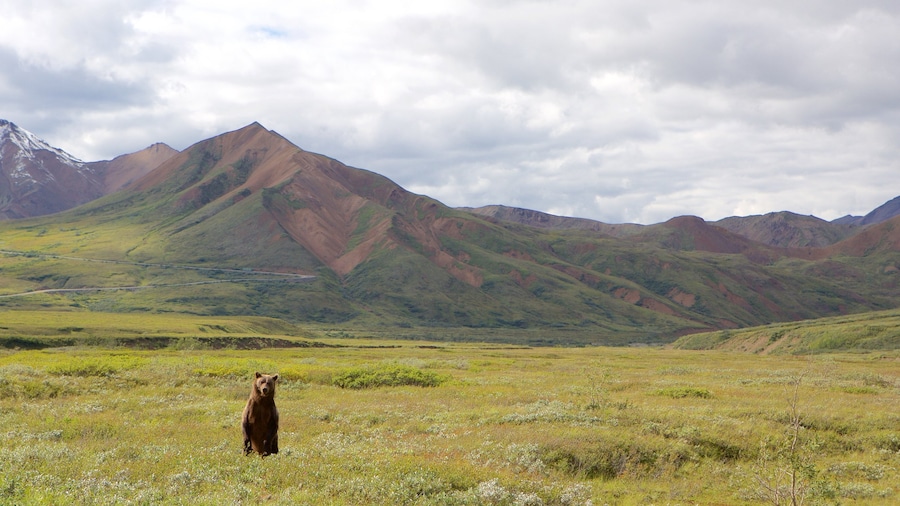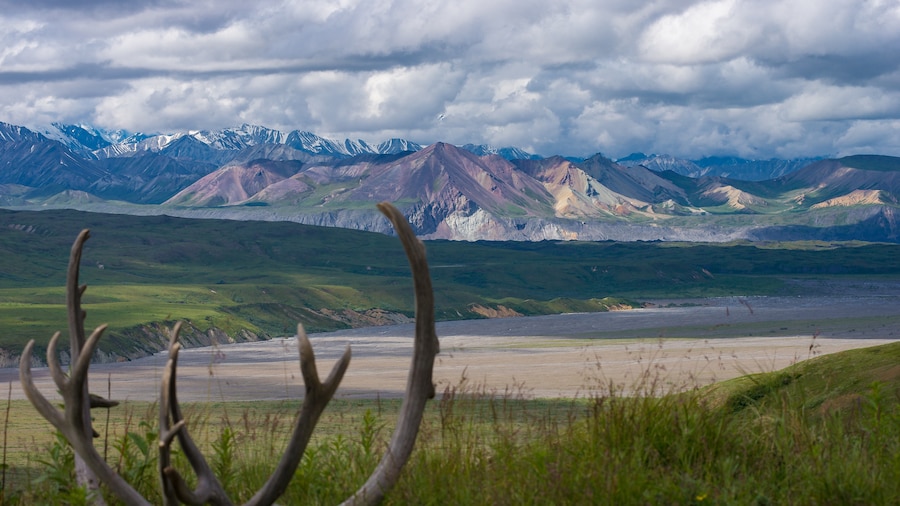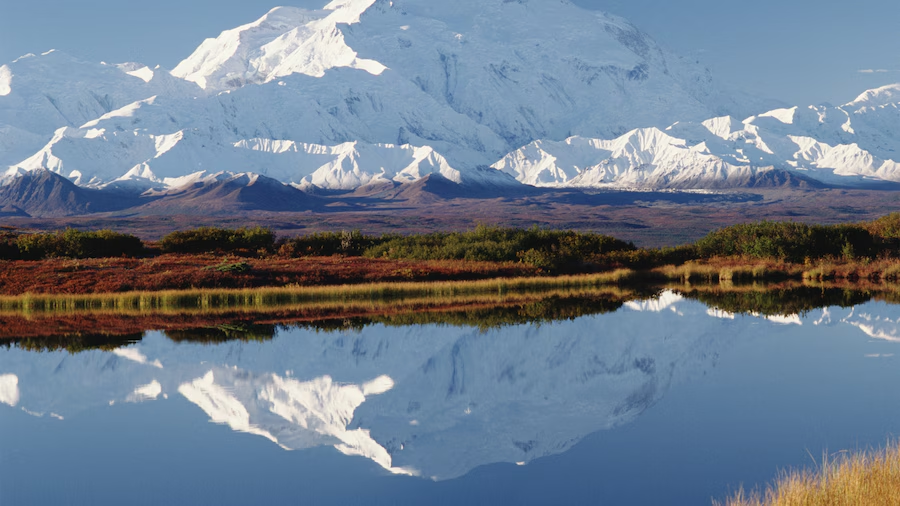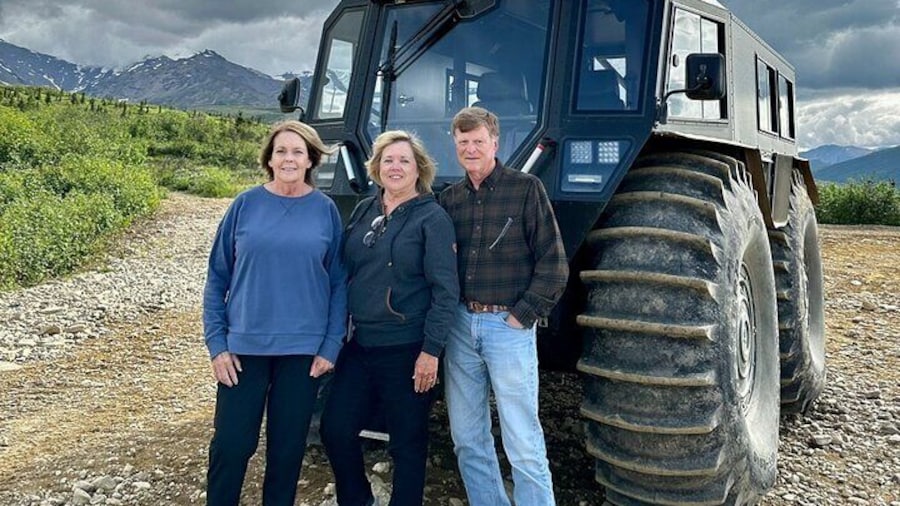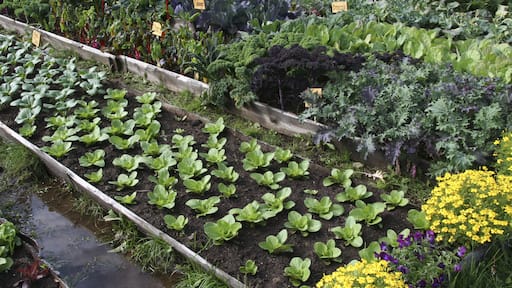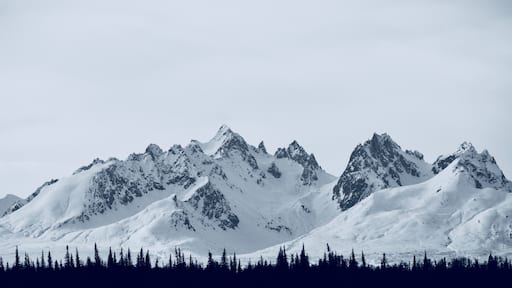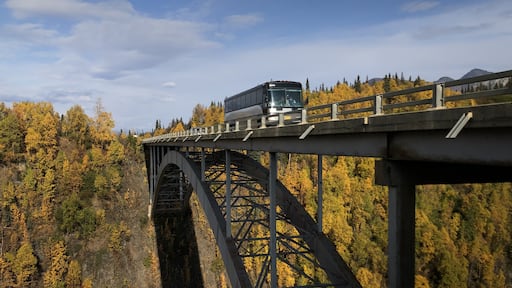Take a wild Alaskan adventure through Denali National Park and Preserve’s 6 million acres (2.4 million hectares). This enormous subarctic landscape of glaciers, mountains and forests surrounds Denali, North America’s highest peak, formerly known as Mount McKinley. Rising 20,320 feet (6,194 meters), the park’s centerpiece is often shrouded in clouds. Build time into your plans to let clouds clear for the best view.
To protect the wildlife and terrain, park traffic is restricted. Only one road leads into Denali, the 92-mile (148-kilometer) Denali Park Road. The first 15 miles (24 kilometers) are paved and can be accessed by all vehicles. Walk, bike or take the bus to venture farther along the road and deeper into the park.
Two types of bus lines serve Denali. Informal shuttle buses let you hop on and off anywhere along their routes. Tour buses provide narration and stop at designated places. Visit Denali National Park’s official website for timetables and ticket prices.
Explore the park on foot, a great way to enjoy the peaceful surroundings. Select from numerous trails ranging from moderate to strenuous. One popular walk for experienced hikers is the Mount Healy Overlook Trail, an arduous trek taking 3 to 4 hours. An easier choice is the Savage River Loop Trail, a moderate 2-mile (3-kilometer) walk. Hiking off trail is also possible obtain a permit in person no more than a day before you begin your journey.
Many people come to Denali to see the wildlife. Among the animals that roam freely here are grizzly bears, black bears, wolves, caribou, moose and Dall sheep.
Camp under the stars in a designated campsite or pitch a tent almost anywhere in the wilderness. Alternatively, stay at a lodge.
The park is 240 miles (390 kilometers) north of Anchorage and 120 miles (190 kilometers) south of Fairbanks. Both cities have airports. The entrance to the park is located along Alaska Highway 3.
Access Denali National Park and Preserve year-round, but be prepared for unpredictable weather. Winters are long and very cold, with heavy snowfall, while summers are damp and cool. Some trails close during winter.






